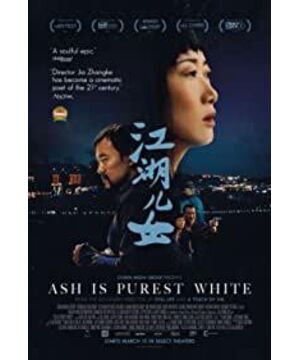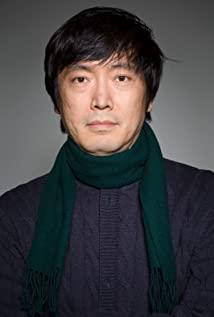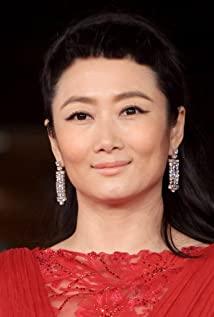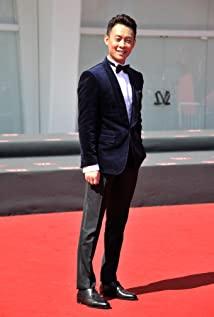Even an unsolvable, desperate, and violent carnival must live rustic and sexy.
Qiaoqiao is a girl in her twenties, with long legs, thin waist, small face, carrying a bag and walking on high heels, floating in the mining area of Datong, Shanxi.
She is a local wild model.
The upper body is embroidered with butterfly straps, red tulle blouse, and the lower body is paired with sky blue and white flared trousers. It is very graceful and agile in the dark mining area.
In 2002, Jia Zhangke shot [Ren Xiaoyao] , and Zhao Tao's Qiao Qiao appeared in the movie in this image.
In the past 16 years, from [Ren Xiaoyao] to [Jianghu Children] , it is still a coincidence, and it is still the same classic retro dress.
Although the timeline of the film is more than ten years from the beginning of the century to the present, but in fact, for Jia Zhangke, who was born in 1970, he has been shooting repeatedly in the adolescent 1980s.
The pop hits of the 80s, the ballroom disco of the 80s, the bell-bottoms of the 80s, and the rivers and lakes of the 80s.
The dress with bellyband suspenders and bell bottoms is rustic and sexy, which can make the director remember this look for many years, which is derived from his 80s complex.
[Station] Soon after the opening, it was Cui Mingliang and Zhang Jun, two teenagers living in Fenyang, Shanxi, who took off their old pants and put on a pair of brand-new bell-bottoms.
Cui Mingliang’s mother asked Zhang Jun: "Junjun, where did you get the two bell bottoms?"
Zhang Jun said in a proud voice: "My aunt brought me back from Guangzhou. You don't know, this is fashionable in a big city!"
Cui Mingliang was immediately criticized by the elders when he went out wearing bell-bottom pants, "What are you wearing? Workers can work with them? Can they squat down?"
Cui Mingliang said angrily: "You don't understand, there are gaps, generation gaps."
In the 1980s, flared pants did represent the beginning of a break between the "new generation" and the previous generation and the pursuit of individuality and freedom.
Many of them are combing their airplane heads, long windbreakers on their bodies, paired with flared pants with tight hips and wide trouser legs, and a pair of toad mirrors.
Carrying dual-card radios on their shoulders and permanent bicycles on their feet, these young people swaggered through the streets, while the lingering songs of Teresa Teng were playing in the radio.
These young men and women wearing bright red bell-bottom pants have become a scenic line on the streets of the small town at that time.
But in the early days, before the reform and opening up in the late 1970s, the streets naturally did not have "fancy clothing" like bell bottoms, only dark gray for the whole people.
The only available colors are gray, black, and blue. They are tunic, jackets, trousers, and often fat work pants.
The popularity of flared pants in China originated from the culture of Japan, Hong Kong and Taiwan.
In 1978, [Wanggo] starring Kurihara Kojuan and [Hunting] starring Takakura Ken became the first batch of Japanese movies to be released in China, and it set off a wave of movie watching.
In the former, Kurihara Komaki played a capable female reporter wearing bell-bottom pants in the movie. The white bell-bottom pants made her more graceful and graceful, which captured the hearts of boys and girls.
In [Hunt] Takakura, a long windbreaker, bell-bottom pants, black sunglasses, and the image of an upright prosecutor immediately became the target of imitation by young men.
Flared pants have become a favorite of men and women.
Starting from Hong Kong and Taiwan, to the coastal cities that quickly landed in Guangzhou and Fujian, and with the lead of coastal tiders, the impact came to cities in the interior.
The hurricane of bell bottoms swept across the country.
But the flared trousers that shocked the world at that time were quickly resisted by the older generation.
In "Days Related to Youth" , there is a plot that says that several young men and women "stubble the qin" (fighting the qin) in Beihai Park, but they are considered to be despondent and sent to the Public Security Bureau.
As a result, the police asked a few people to cut the flared pants with scissors first, because the flared pants represented "bourgeois hooliganism."
At that time, Beijing even triggered a boycott:
Students who wear flared pants to school will be disciplined; factory workers cannot enter the factory to work in flared pants...
"Days Related to Youth" director Ye Jing recalled:
When my father saw me go home with my big back and flared pants, he just slapped me.
However, the more so, the more flared pants have become a symbol of rebellion in the hearts of that generation of young people.
Under the pressure, the flared pants did not disappear, but became popular enough for one.
In Jia Zhangke's [platform], Zhang Jun later went to Guangzhou, and the postcard he sent back said "The World of Flowers is so wonderful."
Flared pants have become the simplest memory of the "flower world" at the beginning of the reform.
Therefore, he later photographed young girls at the end of the century and the beginning of the new century, and let them wear flared pants that belonged to the 1980s.
Flared pants are a foreign fashion. It used to be the preference of Western "Elvis" and hippies. It is also synonymous with disco and breakdancing.
In 1977, a movie starring John Travolta [Weekend Night Fever] became popular in the entire European and American world almost overnight.
It also allowed the original subculture of disco to enter the mainstream world.
In our 80s, Zhang Qiang sang "Romantic 80s, Free 80s, Youth 80s" in a disco.
It was also in the 1980s when young people wore bell-bottom pants and toad mirrors to dance discos in discos.
Jia Zhangke is naturally no stranger to this young memory.
In [Ren Xiaoyao] and [Jianghu Children], there is a scene of cleverly wearing blue and white striped bell-bottom trousers to dance in a disco.
But Jia Zhangke matched her top with a bellyband sling embroidered with butterflies and a red tulle blouse.
Flared pants are a foreign object, but apron is an oriental complex.
As a function of underwear in ancient times, the bellyband has a history of thousands of years, especially in the Guanzhong area of Shaanxi and Shanxi. It is a folk custom.
In these places, whether it is farmers, women or children, ancestors and ancestors can't live without their stomachs all year round.
When the child is born, we must prepare a red cloth bellyband; during the Dragon Boat Festival, the uncle will give a bellyband to the little nephew; and the daughter-in-law who has not been through the door will also make a bellyband for the future husband.
It is not only a practical object, for Shanxi people, it also carries the good wishes of the ancestors to pray for well-being.
The small bellyband is an important protection.
On the other hand, the direction of the bellyband and the female body is self-explanatory.
A corner of silk and a few ties are synonymous with the most classical and perfect female images in the dreams and fantasy of many northern men.
Regardless of whether this kind of worship and imagination comes from female elders or local literature, the gentle, subdued, graceful side of women represented by dudou is hard to break.
When Tian Xiaoe in [白鹿原] wore a bellyband and walked between men's bedspreads, it was a wordless charm and sexy, and it was also a goddess close to perfection in men's hearts.
Flared pants from the West, representing fashion and fashion, and aprons rooted in the East, representing classic conservativeness.
The combination of Qiaoqiao not only implies the 80s, but can also be regarded as a wonderful summary of all Jia Zhangke's films.
In the 1980s under his lens, on the one hand, the era was advancing with rumblings, and on the other, it was due to the nature of praising the simplicity of the rivers and lakes.
Both new and old, flowing forward and guarding the clumsy rusticity.
Datong in [Ren Xiaoyao] and [Jianghu Children], Fenyang in [Station], the same late mining city, reveals decline and loneliness.
But everyone is indulging in the heyday of singing and dancing.
In the 1980s and 1990s, the major coal mine counties in Shanxi developed rapidly relying on the coal industry. One line in [Jianghu Children] is:
All corporatized.
The rivers and lakes of the ancient people collide in the frantic commercial culture. Some people make a lot of money in the torrent of the times, and some people are increasingly moving toward the edge of the city.
By the beginning of the century, there had been some kind of lonely legend about the city of Datong:
Legend has it that all coal mines in Datong have been lighted up, everyone is laid off, and they are catching up with the development of the west. It is possible that all the miners will be moved to Xinjiang for oil extraction.
Jia Zhangke also moved this rumor into [Jianghu Children].
But in such a gray city, everyone is desperately happy. KTV, discos, and restaurants are singing and singing every night. In the dark night, there is an atmosphere of timely fun.
Even an unsolvable, desperate, and violent carnival must live rustic and sexy.
It has gone beyond the scope of simple clothing. This rustic flared pants and apron shirt may also be a mark of Jia Zhangke's generation.
-
Author/curl
The article was first published on the WeChat public account "Pocier"
View more about Ash Is Purest White reviews











